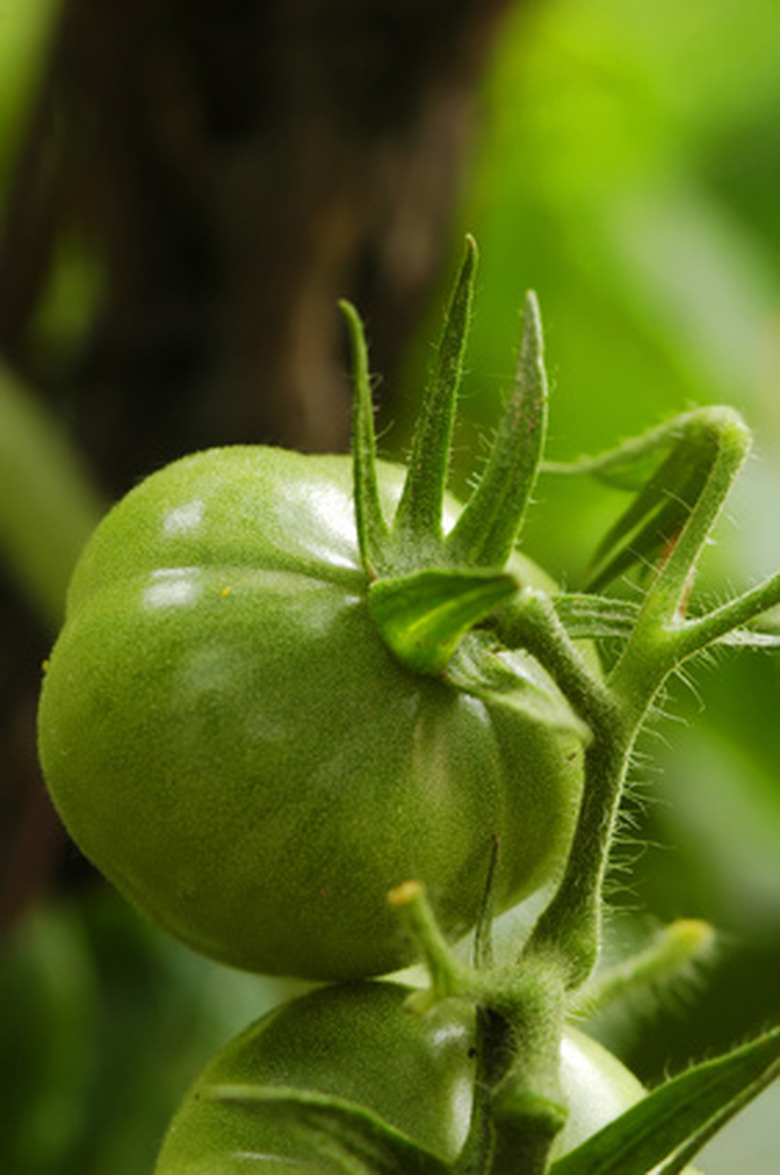How To Grow Tomatoes In Zone 8
Zone 8 on the USDA hardiness zone map is a widely varied and extensive gardening zone. It runs from the southeast corner of North Carolina through the bottom halves of South Carolina, Georgia, Alabama and Mississippi, then includes most of Louisiana, parts of Arkansas and Florida, and a broad swath of mid-Texas. This can be considered the area in which standard Zone 8 gardening advice applies. There are also Zone 8 areas in New Mexico, Arizona and up through California to the coastal Pacific Northwest, but these are desert and coastal climates, unlike the rest of Zone 8. Consult local agricultural extension agencies in those areas.
Step 1
Start seeds early. Mid-March is the time to start seeds outdoors in Zone 8. Be sure you prepare the ground by turning the soil with a spade and selecting a planting spot that is well-drained and gets plenty of sun—at least 12 hours a day. Plant more seeds than you need, to be sure enough germinate.
- Zone 8 on the USDA hardiness zone map is a widely varied and extensive gardening zone.
- There are also Zone 8 areas in New Mexico, Arizona and up through California to the coastal Pacific Northwest, but these are desert and coastal climates, unlike the rest of Zone 8.
Step 2
Water and fertilize right away. Immediately after planting, water the seeds well and sprinkle granulated or liquid fertilizer along with the seeds. Choose a balanced fertilizer with a 10-10-10 mix of nitrogen, phosphorus and potassium. Or, if gardening organically, use a dried manure and bone meal mixture spread throughout the soil. Be sure not to bury the seeds deeper than about a 1/4 inch. The tomato seeds should germinate within a week to 10 days.
Step 3
Shelter young seedlings if needed. Try to select a spot to grow your tomatoes that is somewhat sheltered from wind and cold in the early spring, but if this isn't possible, use old blankets or sheets, plastic sheeting or a tarp to cover the tender young seedlings at night until the nights get warmer. You can stop covering them in April or May, depending on your local mini-climate.
- Water and fertilize right away.
- Try to select a spot to grow your tomatoes that is somewhat sheltered from wind and cold in the early spring, but if this isn't possible, use old blankets or sheets, plastic sheeting or a tarp to cover the tender young seedlings at night until the nights get warmer.
Step 4
Weed out competing seedlings as they grow. Leave one tomato seedling every foot or so to allow the plants to reach full growth, choosing the strongest of the seedlings to keep. Don't over-fertilize; one application of fertilizer at the start of the growing season and one when the plants begin to fruit are adequate. Also, avoid overwatering. Zone 8 gets plenty of rain most years, so unless there is extended drought, you don't need to water constantly. Don't water tomatoes until the soil is thoroughly dry.
Step 5
Fertilize once more at fruiting time. When your plants start fruiting, pay close attention, as common diseases and pests can develop at this time. Wash plants of bugs regularly and remove any diseased leaves or stems. To promote air circulation and reduce rotting, prune off the very bottom set of leaves once the plants are flowering.
- Weed out competing seedlings as they grow.
- Don't over-fertilize; one application of fertilizer at the start of the growing season and one when the plants begin to fruit are adequate.
Step 6
Pick tomatoes when ripe, before they drop off the vine. Harvest lasts through early November in much of Zone 8. However, even in the temperate climates of Zone 8, tomatoes will not survive the winter with frost. Some gardeners choose to let the plants die in the field and till them under in the spring to provide natural fertilizer, while others pull up or cut down their tomatoes in the fall and turn them into mulch or compost.
Things Needed
- Garden spade
- Tomato seeds
- Fertilizer
- Old sheets, plastic sheeting or tarp
- Garden hose
- Garden shears
